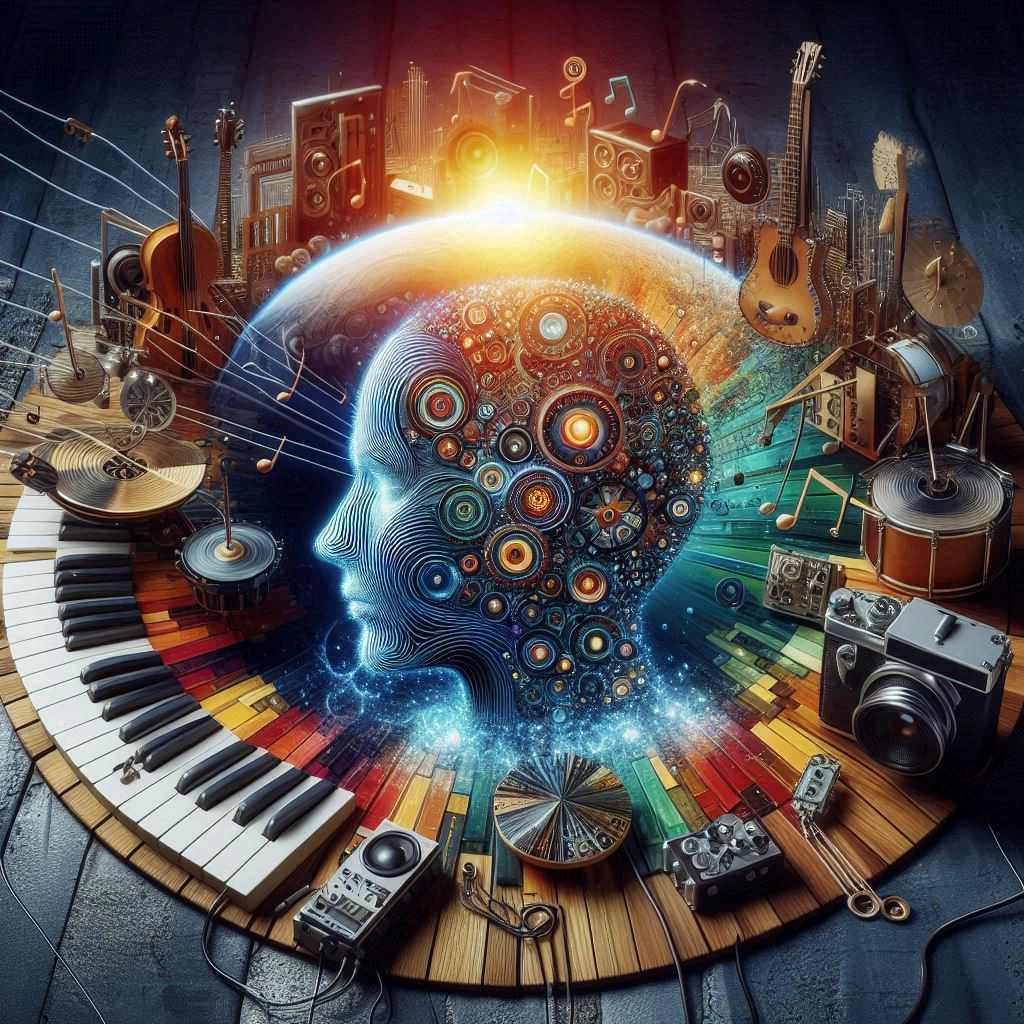Artificial Intelligence in Art and Music: From Creating Artworks to Producing Music
One of the fascinating aspects of artificial intelligence is its ability to create paintings, graphic designs, and digital art. GANs (Generative Adversarial Networks) have made it possible to generate entirely new and unique images. This technology enables systems to imitate different artistic styles based on existing data and produce new works.
Platforms like Deep Dream by Google and DALL·E by OpenAI allow users to generate creative images by entering text descriptions. This not only helps artists expand their ideas, but also makes it possible to create new artworks without requiring specialized knowledge in painting or design.
In addition to painting and digital design, Artificial intelligence has also made an impact in the field of animation and visual effects. Tools like Runway ML allow users to create creative animations without requiring specialized knowledge. On the other hand, AI technology enables 3D artists to model faster and add more detailed elements to their work.
Artificial Intelligence in Art and Music
Artificial Intelligence in Music and Composition
Music is another domain that has been profoundly influenced by artificial intelligence. Machine learning algorithms can create new compositions by analyzing audio data and past melodies. Tools such as AIVA and Amper Music are examples of systems that can generate completely original musical compositions.
This technology helps composers and music producers shape new ideas, create soundtracks for films and video games, and even arrange and edit musical pieces.
Artificial Intelligence in Art and Music
Challenges and Opportunities of Artificial Intelligence in Art
Despite all the advancements, artificial intelligence in art still faces unique challenges. One of the most important issues is the question of intellectual property and the authenticity of artistic works. If an artwork or piece of music is created by AI, does it belong to the algorithm’s developer or the user who utilized it? This remains an unanswered question.
On the other hand, many artists are concerned that AI might replace human creativity. However, many experts believe that AI acts not as a replacement, but as a tool to enhance creativity and improve the artistic creation process. This technology can help artists explore new frontiers in their creativity and provide them with new tools to express their ideas.
In addition, the use of AI in art can also change the experience of the audience. Machine learning-based systems can analyze individual preferences and recommend artworks or music that are likely to be of interest to them. This can help artists establish a better connection with their audience and present their work to a more suitable target market.
The Future of Artificial Intelligence and Art
The future of artificial intelligence and art Artificial intelligence music appears very bright. It is expected that in the coming years, AI systems will be able to create even more creative works by better understanding emotions and artistic styles. Additionally, the interaction between artists and artificial intelligence could lead to the creation of new artistic styles and unique auditory experiences.
Artificial Intelligence in Art and Music
Finally, it can be said that artificial intelligence has played an important role in the transformation of modern art and continues to evolve. This technology not only assists artists in creating new works but also opens up new ways to experience and understand art. For this reason, exploring the interaction between artificial intelligence and art can help better understand the future of this creative industry.


